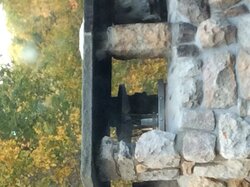I'm about to vent a 4x30 flex liner up (or down if you prefer ) a 200yr old masonry chimney. Was told by more than one person that insulating the "open flue" around the 4" liner would be a very good idea. I don't expect detailed instructions here in a thread, but does anyone have any basic suggestions as to how to do this? Do they make kits for this? Any videos available for self-fabrication? Thanks guys!
) a 200yr old masonry chimney. Was told by more than one person that insulating the "open flue" around the 4" liner would be a very good idea. I don't expect detailed instructions here in a thread, but does anyone have any basic suggestions as to how to do this? Do they make kits for this? Any videos available for self-fabrication? Thanks guys!
 ) a 200yr old masonry chimney. Was told by more than one person that insulating the "open flue" around the 4" liner would be a very good idea. I don't expect detailed instructions here in a thread, but does anyone have any basic suggestions as to how to do this? Do they make kits for this? Any videos available for self-fabrication? Thanks guys!
) a 200yr old masonry chimney. Was told by more than one person that insulating the "open flue" around the 4" liner would be a very good idea. I don't expect detailed instructions here in a thread, but does anyone have any basic suggestions as to how to do this? Do they make kits for this? Any videos available for self-fabrication? Thanks guys!




